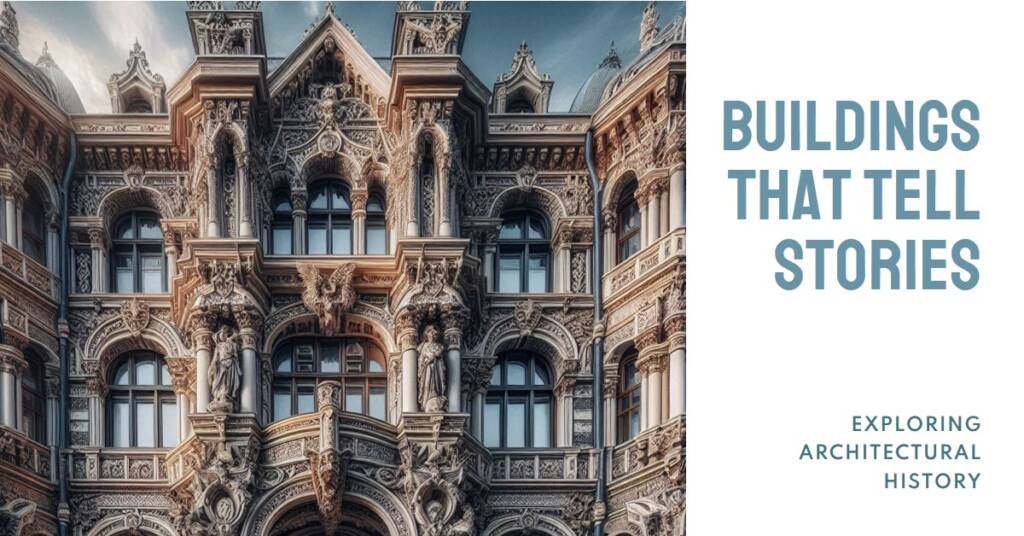
Table of Contents
- Introduction to Architectural Storytelling
- The Elements of Architectural Storytelling
- Cultural Context and Historical Influences
- Case Studies: Iconic Buildings and Their Stories
- Architectural Storytelling Through Design: Techniques and Styles
- The Role of Architects in Shaping Narratives
- Modern Techniques in Architectural Storytelling
- Preservation and the Future of Architectural Narratives
- Conclusion: The Lasting Impact of Architectural Narratives
Introduction to Architectural Storytelling
Architectural storytelling refers to the practice of interpreting and narrating cultural, social, and historical contexts through structures and built environments. This concept holds a significant place in understanding how architecture not only serves functional needs but also embodies narratives that reflect the values, beliefs, and experiences of societies. By examining buildings as textual entities, one can uncover the underlying stories that these spaces convey, revealing their roles as historical witnesses and cultural artifacts.
When we engage with a building, we encounter more than just the physical structure. We are brought into a dialogue with its past—encompassing the political climates, societal norms, and artistic expressions that influenced its design and use. Architectural storytelling can be seen in diverse forms across time and geography, from ancient temples that symbolize religious devotion to modern skyscrapers that embody advancements in technology and design. Each structure contributes to an ongoing narrative that binds together generations, giving insight into the evolution of communities.
Key terms within this domain include “narrative architecture,” which emphasizes the storytelling potential of spaces, and “cultural heritage,” which highlights the ways in which buildings preserve the histories and traditions of distinct populations. This blog post aims to explore various examples of architectural storytelling, revealing the dynamic interplay between architecture and narrative. By analyzing case studies, we will illustrate how buildings act as vessels of historical memory and contextual narratives, allowing us to better understand the significance of architecture in our collective human experience.
The Elements of Architectural Storytelling
Architectural storytelling is an intricate process that communicates narratives through the physical characteristics of buildings. Central to this storytelling are several elements, including design features, materials, and spatial organization, which each play a crucial role in conveying the historical and cultural context of a structure.
Design features encompass various components, such as form, scale, and ornamentation, that define the visual identity of a building. These elements often reflect prevailing architectural styles and cultural influences, providing insights into the era during which the structure was conceived. For instance, the use of Gothic arches may narrate a story of religious devotion and medieval craftsmanship, establishing a link between the past and present. By analyzing these design features, one can uncover the intentions of the architect and the societal values at the time of construction.
Materials used in construction bring their own narrative threads to the architectural tale. Traditional materials like brick, stone, and wood often carry associations with local resources and craftsmanship, thus marking the geographical and cultural significance of the building. Innovations in material technology can also indicate shifts in industrial practices and societal progress. For example, the introduction of steel in construction allowed for the creation of skyscrapers, which symbolize urbanization and modernity, reshaping the skylines of cities worldwide.
The spatial organization of a building further enhances its narrative by dictating how individuals interact with the space. The arrangement of rooms, pathways, and open areas reflects societal norms, such as communal living or private retreats. By exploring how these spaces are designed, one can gain a deeper understanding of the social dynamics and historical context that shaped their use.
Through the combination of design features, materials, and spatial organization, architectural storytelling effectively communicates the multifaceted relationships between buildings, their surroundings, and the communities they serve, highlighting the rich tapestry of human history embedded within the built environment.
Cultural Context and Historical Influences
Architecture serves as a reflection of the cultural context and historical influences that shape societies. Each architectural style embodies the values, beliefs, and experiences of the time and community it represents. For instance, the grandeur of Gothic cathedrals in medieval Europe illustrates not just a religious dedication but also social hierarchies, technological advancements, and artistic movements of the era. The soaring spires and intricate stained glass windows narrate a deep spiritual ambition intertwined with the society’s collective identity.
Furthermore, the impact of significant historical events plays a pivotal role in shaping architectural practices. The Industrial Revolution, for example, led to rapid urbanization, resulting in the rise of utilitarian structures such as factories, which simultaneously encapsulated the spirit of innovation and the challenges of labor. This period resulted in a stark shift in architectural narrative, moving from grandeur and ornamentation to functionality and efficiency. The resulting Industrial architecture not only informed subsequent developments in urban design but also reflected a new societal narrative centered around progress and economic transformation.
Cultural movements also exert influence over architectural forms. The Art Deco movement of the 1920s, characterized by rich colors, bold geometric shapes, and lavish ornamentation, arose in response to both the economic prosperity and the disillusionment following World War I. Buildings from this period articulated a blend of luxury and optimism that spoke volumes about societal aspirations. This movement was pivotal in redefining the visual language of urban environments, indicating that architecture is not only a static form but a dynamic medium through which cultural narratives are expressed and shared.
In essence, cultural context and historical influences are integral to understanding how architecture narrates history. By examining various examples, we uncover the complex interplay between societal evolution and architectural expression, underscoring the importance of context in the stories that buildings tell.
Case Studies: Iconic Buildings and Their Stories
Architectural storytelling allows buildings to convey rich narratives that reflect the cultural, historical, and social contexts of their time. In the following case studies, we explore a selection of iconic buildings from around the world, each representing unique stories through their design and historical significance.
One notable example is the Colosseum in Rome, Italy. This monumental amphitheater, constructed between 70-80 AD, stands as a testament to the engineering prowess of ancient Rome. Its elliptical shape and tiered seating not only accommodated thousands of spectators but also facilitated epic gladiatorial contests and public spectacles. Today, the Colosseum narrates tales of ancient civilization, power dynamics, and the societal values that prevailed during its operational years. The architectural elements employed in its construction, including arches and vaults, showcase the ingenuity of Roman architects and their ability to create a lasting legacy.
Another compelling case study is the Sydney Opera House in Australia. Designed by Danish architect Jørn Utzon and completed in 1973, this iconic structure is recognized for its sail-like roofs that symbolize the maritime culture of Sydney. The building’s innovative design and structural challenges reflect a narrative of creativity and perseverance. The Sydney Opera House not only serves as a performing arts center but also as a cultural beacon, drawing attention to Australia’s artistic and architectural achievements on a global stage.
The Taj Mahal, located in Agra, India, is yet another exceptional example of architectural storytelling. Commissioned by Mughal Emperor Shah Jahan in memory of his beloved wife, Mumtaz Mahal, this white marble mausoleum represents eternal love and devotion. Its exquisite symmetrical layout, intricate inlay work, and harmonious gardens narrate a story of beauty, loss, and the architectural brilliance of the Mughal era.
These iconic buildings exemplify how diverse architectural features and historical contexts converge to craft compelling narratives, highlighting the profound relationship between architecture and storytelling across civilizations.
Architectural Storytelling Through Design: Techniques and Styles
Architectural storytelling serves as a captivating medium through which buildings convey historical narratives and cultural identities. Various techniques and styles have emerged within this discipline that effectively communicate stories to the observer. One prominent method is the use of symbolism in architectural elements. Each ornamentation, material choice, and spatial organization can represent deeper meanings, often reflecting the values and beliefs of a community or time period. For instance, the soaring spires of Gothic cathedrals symbolize the aspiration towards the divine, inviting individuals to experience the transcendent.
Visual narratives are also integral to architectural storytelling. Buildings often tell a story through their design, encouraging viewers to engage with the space. The layout of museums, for example, is often designed to guide visitors through a carefully curated experience, unfolding narratives as they traverse various exhibits. Similarly, the fluid forms found in contemporary architecture suggest movement and progression, mirroring the evolution of the ideas encapsulated within the space.
Innovative design practices have further enhanced architectural storytelling. One notable approach is biophilic design, which incorporates natural elements and promotes a connection between occupants and nature. This technique not only addresses aesthetics but also emotional well-being, crafting an immersive experience that resonates with the user on a personal level. Additionally, adaptive reuse of historical buildings preserves the existing narratives while integrating modern functionality, allowing new stories to emerge from the old.
Throughout architectural movements, different styles have expressed the cultural ethos of their time. For example, Art Deco’s geometric patterns and lavish details embody the optimism of the 1920s, while Brutalism’s raw, unfinished materials reflect a post-war desire for authenticity. Each style serves as a vessel of its era, encapsulating the historical context and societal aspirations.
The Role of Architects in Shaping Narratives
Architects serve as vital storytellers within the realm of built environments, utilizing their expertise to weave narratives that reflect cultural values, historical contexts, and societal needs. The role of architects extends far beyond mere structural design; it encompasses the ability to integrate symbols and themes into their creations, constructing spaces that resonate with users on emotional and psychological levels. By considering various elements such as materials, form, and context, architects manifest narratives that can encapsulate the essence of a community or a specific moment in time.
When embarking on a design project, architects meticulously plan their approach by absorbing the surrounding environment’s character and the historical lineage of the site. This understanding informs their design choices, allowing for a dialogue between the past and present. For instance, an architect might incorporate traditional motifs within a modern framework, thereby establishing a narrative bridge that honors heritage while embracing innovation. This approach generates a rich tapestry of historical significance, inviting occupants and visitors to engage with the building’s story.
Moreover, personal philosophies play a crucial role in shaping the stories architects decide to convey. Many architects are influenced by their experiences, cultural upbringing, and global perspectives, which culminates in unique architectural expressions. This distinct storytelling is evident in landmark structures worldwide, where one can observe the marriage of form to function, aesthetics to practicality. Architects interpret narratives from the cultural psyche and translate them into physical realms, thereby contributing to both the identity of the location and the collective history of the architectural canon.
In this context, the integration of societal influences cannot be overlooked. Architects are often tasked with responding to social issues like sustainability and inclusivity, embedding these considerations within their narratives. Through thoughtful design choices, they foster connectivity and dialogue amongst users, ensuring that the stories buildings tell evolve to meet contemporary needs while maintaining a dialogue with the past.
Modern Techniques in Architectural Storytelling
Architectural storytelling has significantly evolved with the advent of modern technology, enabling architects and designers to craft narratives that resonate more profoundly with audiences. Among these advancements, virtual reality (VR) and augmented reality (AR) are at the forefront, transforming how people experience and interpret spaces. By immersively placing users within a built environment, VR allows individuals to engage with architecture in ways never before possible. Users can explore historical buildings or conceptual designs, offering a profound understanding of the architectural intent and human experience within these spaces.
AR complements virtual experiences by overlaying digital information onto the physical world. For instance, while visiting a historic site, visitors can use AR applications to view reconstructions of previous architectural features and understand the changes made over time. This integration of technology creates a layered narrative that adds depth to the physical space, enhancing the storytelling aspect of architecture. Additionally, this method can educate and entertain, allowing users to grasp the historical significance and cultural context of structures in real-time.
Interactive installations also play a crucial role in modern architectural storytelling. These installations invite audience participation, leading to a more personal connection with the narrative being expressed. By engaging with tactile elements or interactive displays, visitors can become active participants in the storytelling process, facilitating a deeper comprehension of the architecture’s heritage and purpose. Employing sensors or motion-activated technology, these installations can react to user interaction, providing customized experiences that vary from person to person, thus enriching the narrative journey.
In summary, the integration of modern techniques such as virtual reality, augmented reality, and interactive installations is redefining architectural storytelling. These advancements not only captivate audiences but also foster a unique, immersive engagement with the history and context of architectural spaces, allowing for a richer understanding of the narratives embedded within them.
Preservation and the Future of Architectural Narratives
The preservation of historical buildings plays a crucial role in maintaining the integrity of architectural narratives. As urban landscapes evolve, the challenge of retaining these stories amidst modern development becomes increasingly complex. Historical buildings serve as living testaments to the past, encapsulating the values, traditions, and cultural heritage of specific eras. When neglected or demolished, the risk of losing these narratives heightens, leading to a diminished understanding of historical contexts and architectural evolution.
Efforts to preserve such structures often face opposition from the push for new developments. Urban planners and developers may prioritize economic growth and modern aesthetics over historical significance, leading to a potential loss of identity within communities. Consequently, it is essential to strike a balance between accommodating contemporary needs and protecting the architectural heritage that informs local narratives. Strategies such as adaptive reuse, where old buildings are repurposed for new uses while retaining their original character, emerge as vital solutions. This approach demonstrates that historical buildings can coexist with modern architecture, enhancing the storytelling aspect of urban environments.
The future of architectural narratives hinges on a commitment to preservation amidst relentless modernization. The incorporation of technology in preservation practices, such as digitally archiving structures and engaging communities through VR experiences, showcases an innovative path forward. These methods not only educate the public about architectural history but also promote tourism and local engagement. Furthermore, fostering an appreciation for architectural narratives can galvanize community initiatives aimed at preservation and adaptive reuse, ensuring the stories behind buildings are acknowledged and cherished. As cities continue to grow and change, it is imperative to nurture the dialogue between the past and the future, thus enriching our understanding of architecture as a storyteller of human history.


Conclusion: The Lasting Impact of Architectural Narratives
Throughout this exploration of architectural storytelling, we have uncovered the profound ways in which buildings communicate the narratives of our past. Each structure, whether grand or humble, carries with it a wealth of history that reflects the cultural, social, and political moments of its time. Understanding architectural storytelling is essential, as it allows us to see beyond the mere physical presence of a building and appreciate its role as a vessel of memory and identity.
From ancient temples that resonate with spiritual significance to modern skyscrapers that embody innovation and progress, architecture acts as a bridge connecting generations. These edifices encapsulate stories of the people who constructed them, the communities that inhabit them, and the historical events that inspired their creation. They serve not only as functional spaces but also as testimonies to the aspirations and challenges faced throughout history.
As we have discussed, architectural narratives foster a sense of belonging and continuity. They can provoke emotions, inspire movements, and shape perceptions of a place or people. By investigating the layers of meaning embedded within architectural forms, we can cultivate a deeper appreciation for our built environment. The significance of recognizing these narratives amplifies the experience of architecture and enhances our connection to cultural heritage. As we walk through streets lined with buildings, we are reminded that we are not merely observing structures; we are engaging with the stories and traditions they embody.
In summary, architectural storytelling is a vital lens through which we can understand and appreciate our surroundings. It invites us to reflect on the narratives that have shaped our world, urging us to embrace the emotional resonance and cultural significance of the spaces we inhabit. By valuing these connections, we can ensure that the stories of our architectural heritage continue to inform and inspire future generations.



